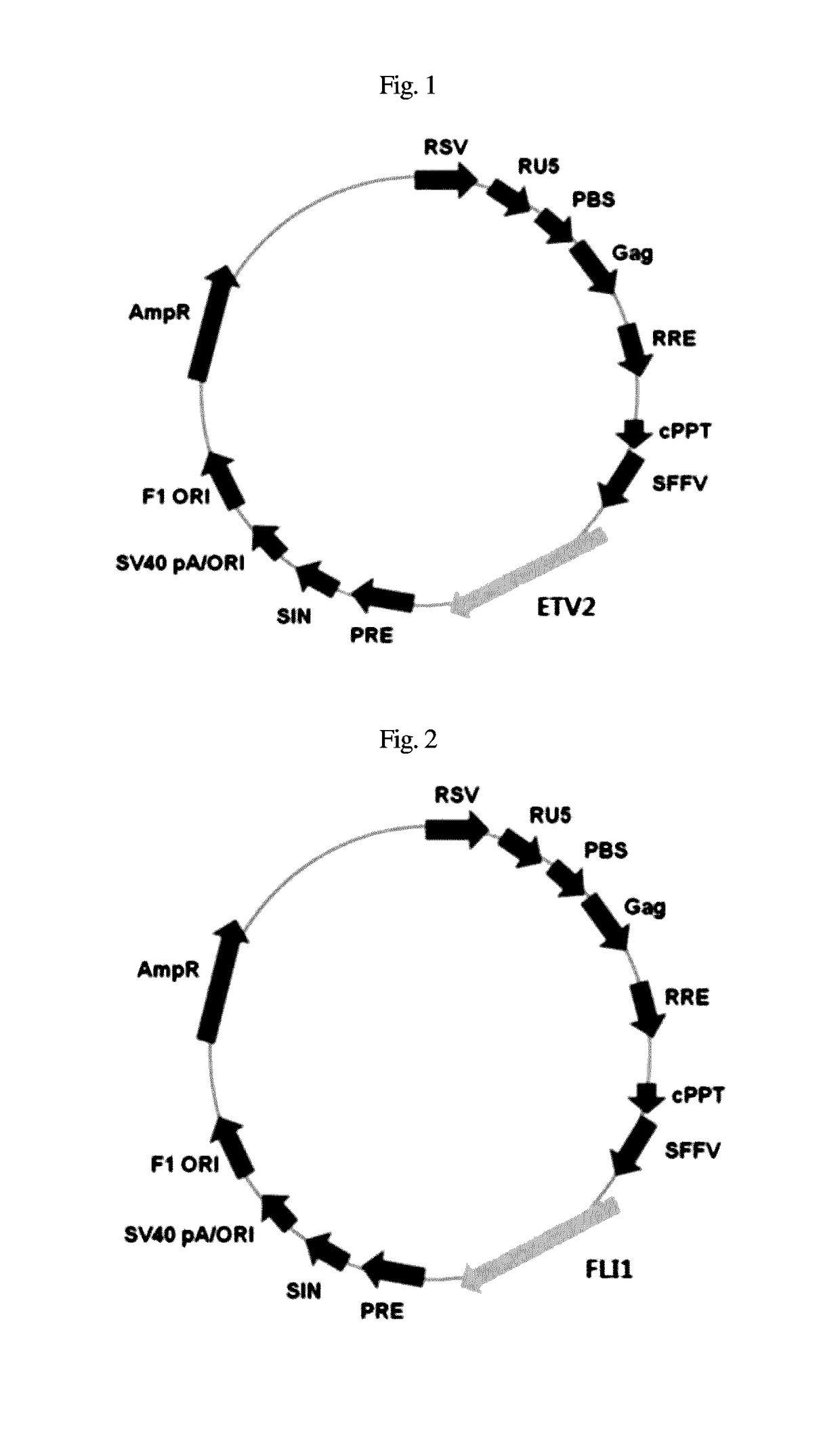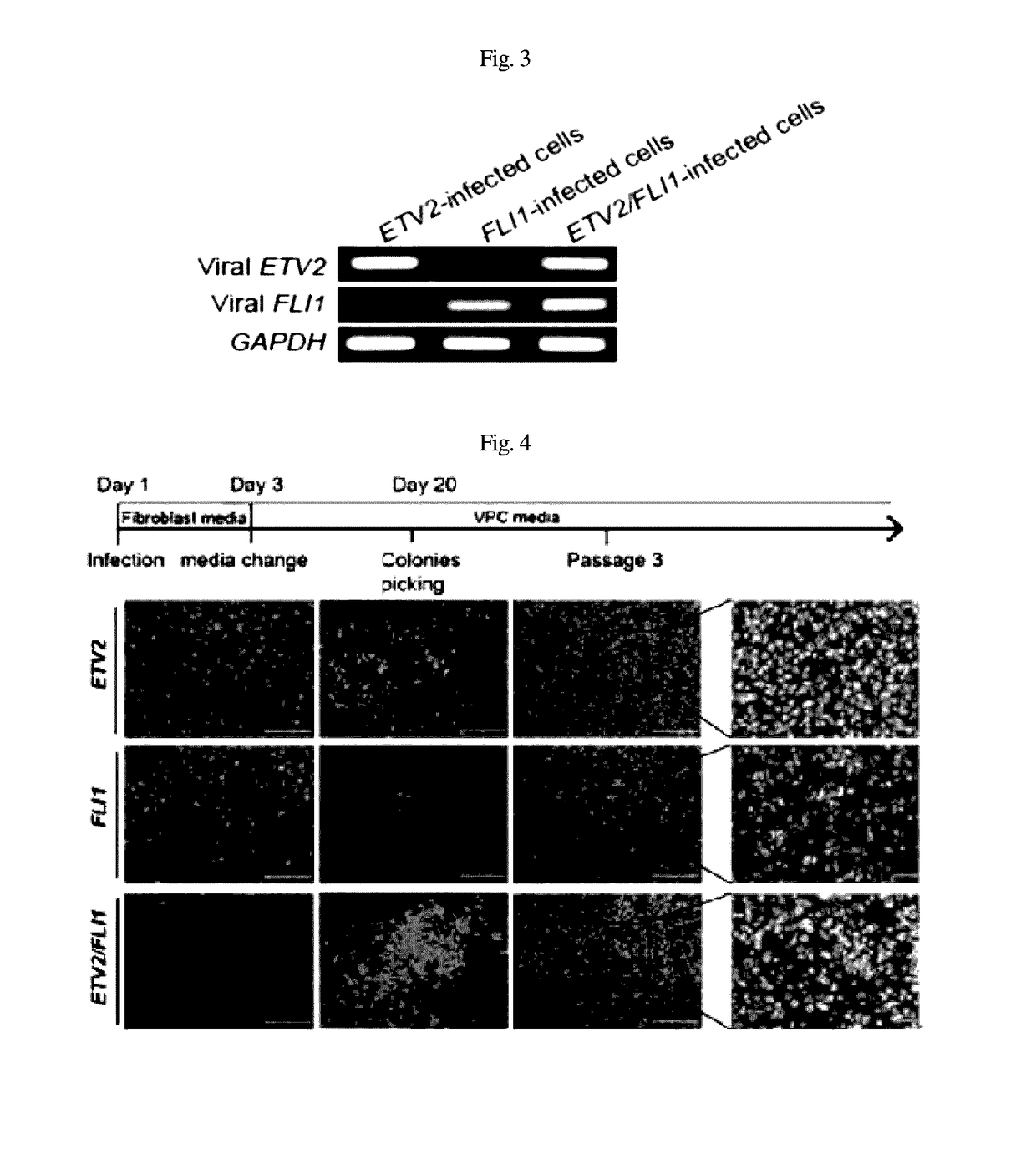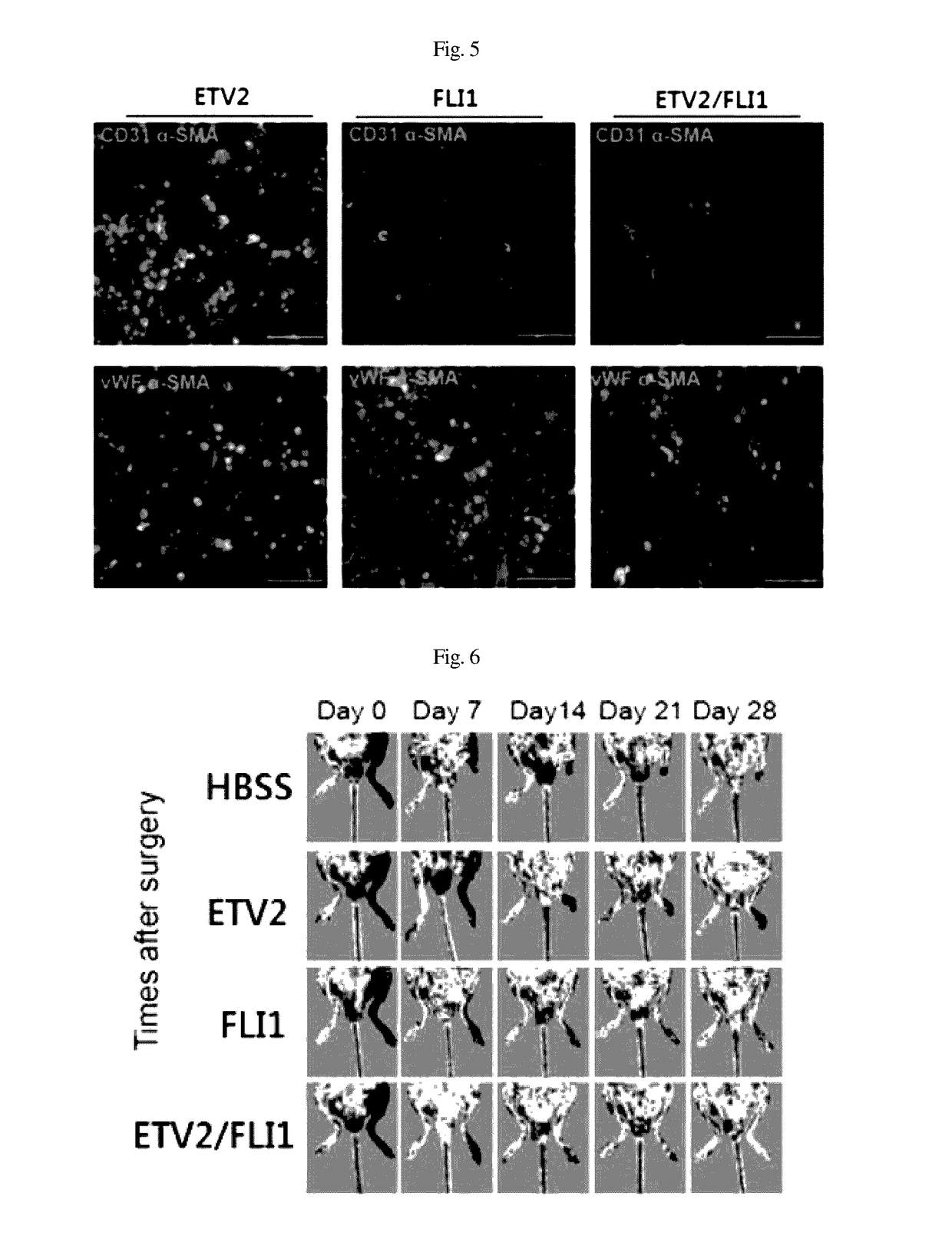Composition for inducing direct transdifferentiation of somatic cell into vascular progenitor cell, and use thereof
- Summary
- Abstract
- Description
- Claims
- Application Information
AI Technical Summary
Benefits of technology
Problems solved by technology
Method used
Image
Examples
example 1
Preparation of Induced Vascular Progenitor Cells (iVPCs)
[0049]Dermal fibroblasts were cultured in a fibroblast medium (10% FBS-containing DMEM high glucose, 2 mM L-glutamine, 1× MEM nonessential amino acid, β-mercaptoethanol, 1× penicillin / streptomycin).
[0050]293 cells were infected with an SFFV promoter, that is, an SF-based lentiviral vector encoding complementary DNA of ETV2 and FLI1, and with a packaging-defective helper plasmid using a Fugene 6 transfection reagent (Roche). After 48 hr, a viral supernatant was obtained according to the method disclosed in Zaehres, H. & Daley, G. Q., (2006), Methods Enzymol 420, 49-64.
[0051]The dermal fibroblasts were aliquoted at a density of 1×104 cells into a 0.1% gelatin-coated 6-well plate and cultured for 24 hr, together with the viral supernatant that contained ETV2 and FLI1 (1:1) and was supplemented with 6 μg / ml protamine sulfate (Sigma). The transduction efficiency was calculated using SF-GFP control virus.
[0052]Two days after injectio...
example 2
Expression of ETV2 and FLI1 using RT-PCR and Phase-Contrast Microscopy
[0053]Five days after infection, the expression of ETV2 and FLI1 was observed using RT-PCR.
[0054]Specifically, total RNA was extracted from each cell using an RNeasy kit (Qiagen), five days after the infection, and cDNA was synthesized using Omniscript RT (Qiagen). PCT was performed using a TaQ DNA polymerase recombinant (Invitrogen).
[0055]After RT-PCR, expression was confirmed through loading on agarose gel, using GAPDH as a control (FIG. 3).
[0056]As illustrated in FIG. 4, using phase-contrast microscopy, colonies began to appear in the cell populations infected with ETV2 and ETV2 / FLI1 within 10 to 11 days after the infection, and the number of colonies increased over time.
[0057]The present inventors observed colonies in the cell populations infected with FLI1 within 30 days after the infection. In order to proliferate the colonies, the cell populations were physically separated and cultured in a gelatin-coated d...
example 3
In Vitro Analysis of Vascular Progenitor Cells using Immunocytochemistry
[0058]In order to perform immunocytochemistry, the cells were immobilized for 10 min in 4% para-formaldehyde and treated with 0.1% Triton X-100 for 10 min so as to be permeable. The cells were cultured for 30 min in a 4% FBS / PBS blocking solution and then reacted for 1 hr with a primary antibody diluted with the blocking solution at room temperature. The primary antibody used was as follows: vWF (1:400, Abcam), CD31 (1:200, Chemicon) and α-SMA (1:200, Abcam).
[0059]After reaction with the primary antibody, the cells were washed three times with 0.05% PBST (tween20 / PBS). Thereafter, a secondary fluorescent antibody was diluted with PBS and then reacted with the cells for 1 hr (Alexa Fluor 488 and 568; 1:1000, Molecular Probes). The cells were washed three times with 0.05% PBST, and the nuclei were counterstained for 15 sec using Hoechst 33342 (Thermo Scientific). After the staining, the cells were observed using a...
PUM
 Login to View More
Login to View More Abstract
Description
Claims
Application Information
 Login to View More
Login to View More - R&D
- Intellectual Property
- Life Sciences
- Materials
- Tech Scout
- Unparalleled Data Quality
- Higher Quality Content
- 60% Fewer Hallucinations
Browse by: Latest US Patents, China's latest patents, Technical Efficacy Thesaurus, Application Domain, Technology Topic, Popular Technical Reports.
© 2025 PatSnap. All rights reserved.Legal|Privacy policy|Modern Slavery Act Transparency Statement|Sitemap|About US| Contact US: help@patsnap.com



